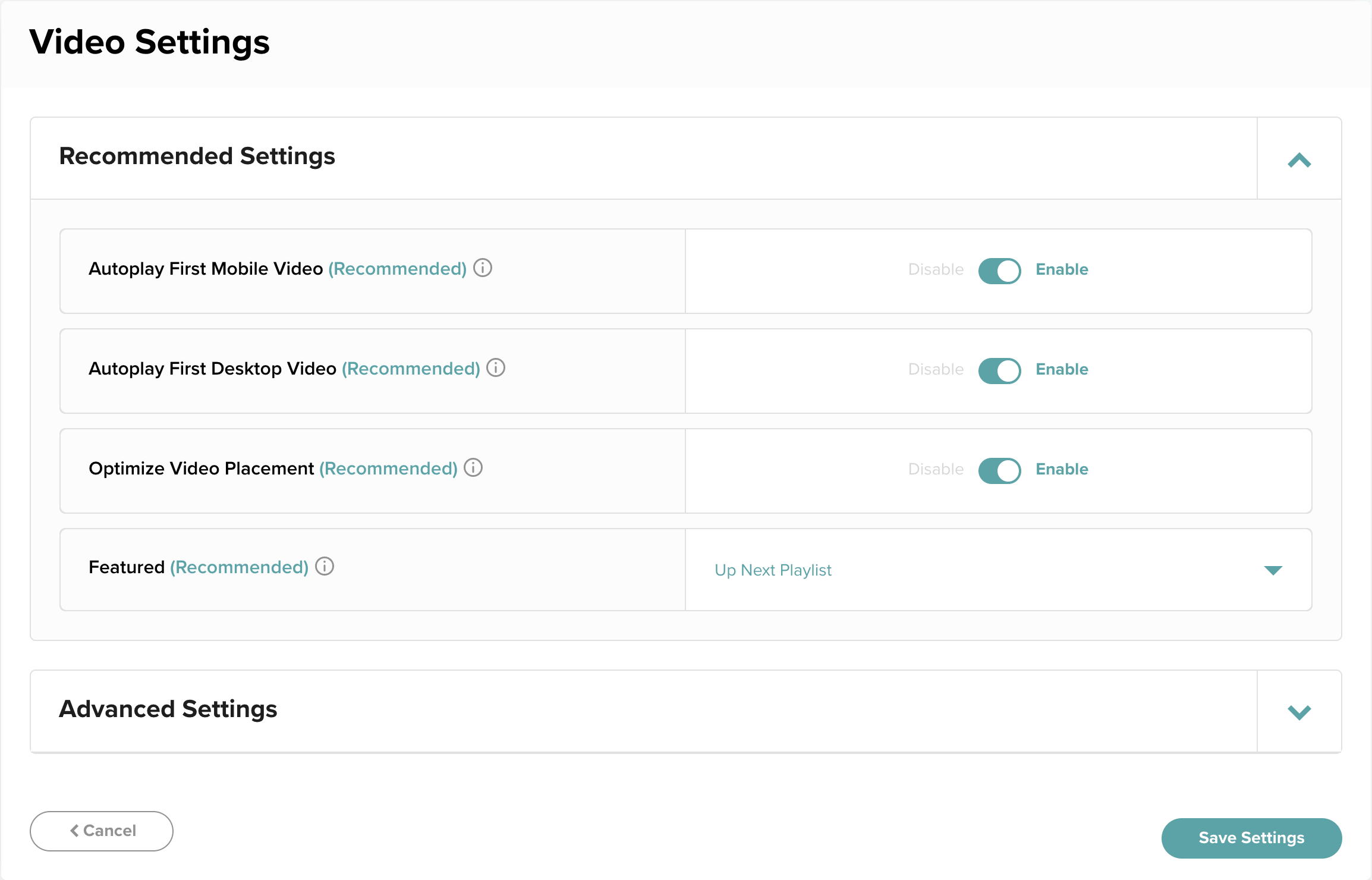- Video
Mediavine Video: The Ultimate Guide (Even if You Don’t Have Any Video!)
•
So, you want to jump on board the video train, but don’t know where to start?
No worries. We’ve got you. First, let’s answer the most basic question:
What do you need, right now, to get started with Mediavine video?
That’s it.
Note that videos are nowhere on that one-item “list.”
That wasn’t a mistake, and we’ll explain why below.

Slideshow video vs. Live action video
There are two primary types of videos that publishers use to earn money with Mediavine ads: slideshow videos and live action videos.
What is a slideshow video?
Slideshow videos are videos created using still images, layered with text and music, and saved in a video format. They are faster and less expensive to produce, and if done correctly, they can look very professional and add value to your blog posts.
They can even incorporate live video clips for additional production value.
What is a live action video?
A live action video is what it sounds like, a professionally-produced video that incorporates mostly video clips into the end result. There can be text components involved as well, but this style is based on video, not photos.
These are your “hands in pans” style videos, or clips demonstrating the making or doing of something. They can also feature people talking into the camera, and in general, these videos are high-quality and typically of longer duration than a slideshow video.
As such, these can be very expensive and/or time-consuming to produce, but the reward is that they are also the most engaging and add the most value to the reader.
Long form video is designed to give the reader something they cannot get from just reading the blog post itself.
Which video type is better for monetization?
It depends. Like most things in advertising, what option is “better” depends on many different factors, and also what platform the video will run on.
For platforms such as Facebook and YouTube, long-form video is preferable, earns more revenue and is more highly engaged with.
With blog posts, users are probably not there to watch a five-minute video. They are coming to skim your post to see if it answers their questions or meets their immediate needs.
Therefore, on your blog, short videos that are between 45-1:30 seconds in duration will most likely earn you more revenue with Mediavine.
If you already have professionally-produced (by you, or a third party) long-form video content, for the best results I’d suggest editing it down into a short teaser of this length for Mediavine embeds.
You can think of this as a commercial of sorts for your longer video content, and as a value add for your blog post as well.
If you do NOT have any video content yet, do NOT let the lack of professionally produced video stop you from earning those video advertising dollars.
You can have a slideshow video created, uploaded, and running on your site in under two hours of active work – or less if you’d prefer we make it for you (it typically takes about a week for us to turn one around, but if you personally don’t have time, it’s a terrific option).
Okay, sign me up. I want to start running video!
Great! The most effective way to start out is to make a “Best of”, “Reader’s Favorites” or “Get Started with…” type of video that features 4-5 blog posts that you’d like to feature.
You can quickly and easily make your own with a program like Animoto or Lumen 5.
In addition to the video itself, you will want to create a blog post with the same title and premise as the video, and use it as an internal roundup and a place to embed the video. (We’d love to suggest Create Lists for this!)
Once the video is created, uploaded to your Mediavine Dashboard, and embedded in your blog post, we’ll want you to turn on the “Featured Video” and all of the Autoplay and Optimize options in your Video Settings:

Choosing these settings will insert the video you selected as the Featured Video automatically in any posts that don’t have a different Mediavine video embedded (which will be all of them, at first, if you are starting from scratch.)
It allows you to earn the amazing video ad CPMs while you’re creating more post-specific videos for your other blog posts.
If you want to add a heading to your video to give it some context, you can do that down in the Advanced Options of the Video Settings.
That’s it! Just like that, you’ll be in position to start monetizing your content with Mediavine video. Sit back, relax, give yourself a pat on the back, and then read on to find out how to maximize things even MORE.
Wait, there’s more? What else can I do?
Glad you asked. The second phase of video implementation when you’re starting from scratch is to start creating post-specific videos.
Animoto and Lumen 5 are excellent tools for this as well. If you’re looking to create a library of post-specific videos, we suggest buying a subscription to one of these awesome tools and learning how to create post-specific videos from your existing content.
It’s the same general principle that we use to make the Featured video, only instead this time we’re focusing on a single topic instead of a broad overview of several topics or posts.
You can use images from the blog post itself, stock video footage to add production value and include tidbits of information or tips from the post with stylized text.
Once you have it created, just upload and embed and you’ll be on your way to earning even more because once you have more than one Mediavine Video added to your library, you’re eligible for our Playlist features.
This means you will run another pre-roll ad plus your next video after the first video ends. In other word, more video impressions and more revenue!
If you repeat this process for all of your top content, you’ll wind up with all of your top posts having a relevant, high-quality video embedded. That means high-paying CPMs, and furthermore, those posts will be marked up with video schema (which Google likes).
That means opportunities for additional conversions on your site by recommending top performing and favorite content to your readers via a highly-engaging, unobtrusive and user-friendly video unit.
Wait! I already have videos on Youtube and/or Facebook!
Typically, YouTube videos are longer than our recommended, 45-1:30 second length for Mediavine videos, which are designed to maximize revenue.
YouTube and Facebook videos are designed to keep people on those platforms as long as possible, and longer videos tend to achieve that for obvious reasons.
If you already have Facebook and YouTube videos created, a great option is to create short “teaser” reels from the existing footage that are 45-1:30 seconds long.
As we said above, think about utilizing Mediavine videos as a kind of trailer for those longer videos, and editing the originals down to teaser versions.
After you upload the newly edited version into your Mediavine dashboard, embed it in the most relevant post on your site. Instead of the Featured Video playing on that post, now that post-specific, manually-embedded video will play there.
I don’t have any videos right now. What should I do?
While Google loves video content for SEO purposes, it doesn’t mean that you have to lose out on ad earnings. Our new Universal Player does not depend on video content from you in order to run lucrative video ads on your site.
The Universal Player can run on all content pages across your site — even if you already have content videos playing through the Mediavine Video Player on certain pages — to maximize earnings.
Here’s what the Universal Player looks like on mobile and desktop:


The Universal Player sits in a fixed position at the bottom of the screen and is slightly smaller than the Mediavine Video Player. Its compact presence creates a better viewing environment for your readers while retaining the viewability that advertisers expect.
Enable the player today and turbocharge your earnings now!
About the author
Share this page